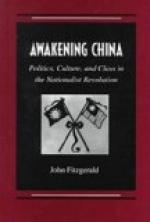It was in the character of apostles of science that Roman Catholic missionaries obtained a footing in Peking three centuries ago, and were enabled to plant their faith throughout the provinces. Armed with telescope and sextant they effected the reform of the Chinese calendar, and secured for their religion the respect and adherence of some of the highest minds in the Empire. So firmly was it rooted that churches of their planting were able to survive a century and a half of persecution. Their achievements, recorded in detail by Abbe Huc and others, fill some of the [Page 282] brightest pages in the history of missions. I shall not enlarge on them in this place, as my present task is to draw attention to the work of Protestant missions.
A CENTURY OF PROTESTANT MISSIONS.
It is not too much to claim for these last that for a century past they have been active intermediaries, especially between the English-speaking nations and the Far East. On one hand, they have supplied such information in regard to China as was indispensable for commercial and national intercourse, while on the other they have brought the growing science of the Western world to bear on the mind of China. Not only did Dr. Morrison, who led the way in 1807, give the Chinese the first translation of our Holy Scriptures; he was the very first to compile a Chinese dictionary in the English language.
THE PIONEER OF AMERICAN MISSIONS
It was not until 1838 that America sent her pioneer missionary in the person of Dr. Bridgman. Besides cooeperating with others in the revision of Morrison’s Bible, or, more properly, in making a new version, Bridgman won immortality by originating and conducting the Chinese Repository, a monthly magazine which became a thesaurus of information in regard to the Chinese Empire.
THE PRESS—A MISSIONARY FRANKLIN
The American Board showed their enlightened policy by establishing a printing-press at Canton, and [Page 283] in sending S. Wells Williams to take charge of it, in 1833. John R. Morrison, son of the missionary, had, indeed, made a similar attempt; but from various causes he had felt compelled to relinquish the enterprise. From the arrival of Williams to the present day the printing-press has shown itself a growing power—a lever which, planted on a narrow fulcrum in the suburb of a single port, has succeeded in moving the Eastern world.
The art of printing was not new to the Chinese. They had discovered it before it was dreamed of in Europe; but with their hereditary tendency to run in ruts, they had continued to engrave their characters on wooden blocks in the form of stereotype plates. With divisible types (mostly on wood) they had indeed made some experiments; but that improved method never obtained currency among the people. It was reserved for Christian missions to confer on them the priceless boon of the power press and metallic types. What Williams began at Canton was perfected at Shanghai by Gamble of the Presbyterian Board, who multiplied the fonts and introduced the process of electrotyping.




